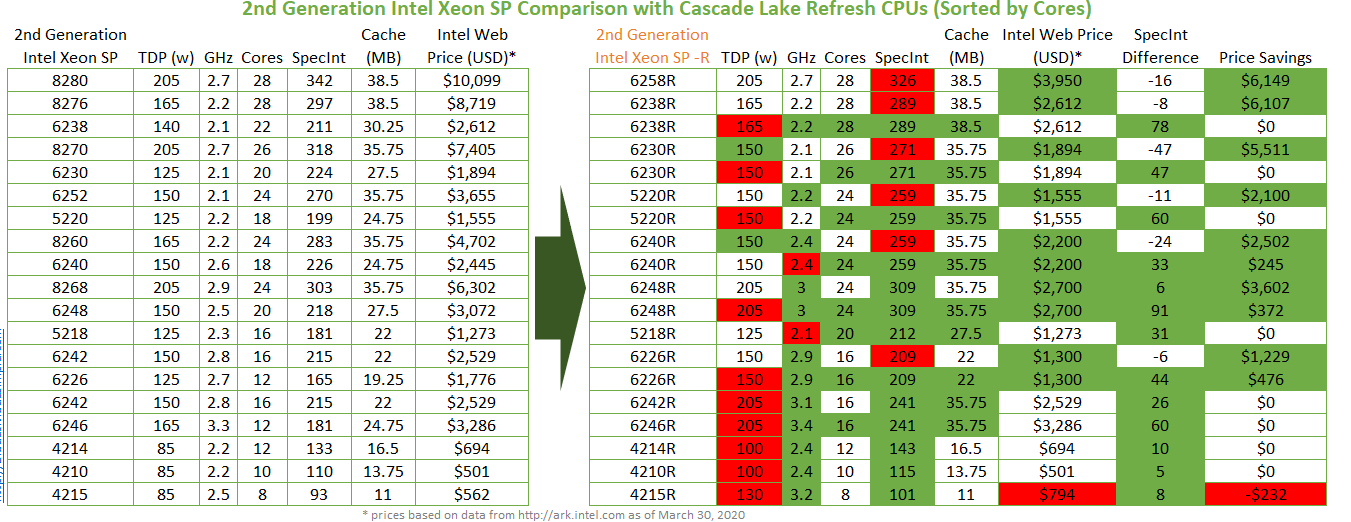18th June 2020
New Intel Cascade Lake Processor
During the design and sizing workshop and while visiting some of the customers, some of them were very eager to know about the latest Intel Cascade Lake Processor which was launched a couple of months ago. I would like to take this opportunity to put some details about this processor.
Intel added new CPUs to the Cascade Lake refresh family and these new released CPUs are part of existing 2nd Generation Intel Xeon SP CPU family. In fact you can easily identify these CPUs with the “R” at the end of Intel Model number. Why is this refresh coming up after releasing 1st Gen Xeon SP last April. According to Intel, they introduced these CPUs to help deliver “Platinum level Performance at Gold Price”. As you will see in the chart below, Intel delivers on this goal. Let’s look at some of the things we should know about 2nd Generation Intel Xeon SP refresh CPUs.
The current 1st Generation CPUs aren’t going away
In the past, we’ve gotten used to Intel phasing out CPUs once new ones are introduced. That is not the case with the 2nd Generation Intel Xeon SP Refresh CPUs. They aren’t replacing any CPUs but instead are NEW additions. If you don’t like the “-R” CPUs, don’t worry – you can continue buying what you’ve been buying.
You don’t get Large Memory with them
As you look at the chart below, you’ll notice there are not any CPUs with the “-L” suffix therefore the maximum memory you are able to run with these offerings is 1TB per CPU (same as the existing 2nd Generation Intel Xeon SP CPUs.) This is very important to realize, as if you invest in these CPUs and decide you want to load up your servers with memory, you risk going above that 1TB of RAM / CPU hard limit that Intel set which means your server won’t boot. I can’t say whether or not Intel will ever add larger memory support on these “-R” CPUs so for now, if you need large memory support, these CPU’s aren’t for you.
No Support on 4 Socket Servers
I’ve also confirmed with Intel that these new “-R” CPUs are only supported with 2 CPU server designs. They will not be supported on 4 socket servers. In PNG customers Data Centre visit I have done, I hardly found any 4 Socket design. So this shouldn’t bother us anyways.
Most Offer Higher Frequencies, Cores, Cache and Sometimes TDP
If you didn’t figure it out, the chart below is a comparison between the 2nd Generation Intel Xeon SP CPUs and the “Cascade Lake Refresh” CPUs. The green blocks show where the “-R” CPUs have an advantage versus the CPU on the left. In most of the comparisons, the “-R” CPUs offer higher frequencies, more cores, higher cache at a lower price. The trade-offs, however could be a lower performance (SpecInt) or higher TDP (Thermal Design Power).
Please do not hesitate to contact us if you need any more technical information.
Pradeep Mascarenhas, Senior Technology Consultant
Email: Pradeep@msrpng.com
